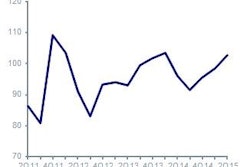
When companies experience success and increased sales with domestic promotions, there is a natural tendency to explore the potential of replicating a similar promotion in additional markets to garner the same results—a common practice in the food and consumer packaged goods (CPG) industries. When those added markets are international, it is especially critical to consider not only the consumer-facing and cultural implications of the promotion, but also the operational capabilities that must come into play.
Just as a company would consult marketing experts before launching a campaign in a new market or country, it’s essential to involve supply chain experts who understand the local market to help plan and execute an effective international promotion.
Successful promotions rely on more than products that meet the international markets’ local or regional tastes and style. To be executed effectively, they require an operational infrastructure tailored to the markets with efficient supply chain operations in place. Before launching an international promotion, there are four key considerations to keep in mind.
Is my Network Capable?
Promotions, especially in the CPG and food industry, can be challenging. They often require new ingredients or product components. New ingredients and components can mean new suppliers, new locations to source from, new transportation requirements, etc. Early inclusion of supply chain managers in the planning process is critical to assess your systems capability of executing a promotion.
This communication can help effectively evaluate whether or not you need to make changes to your current network, what new ingredients or supplies you need to invest in, and if it’s necessary to begin making product commitments.
That said, it is critical for a company to determine, not assume, its network capabilities by examining whether or not its supply chain is reliable, flexible and comprised of an infrastructure that can redistribute inputs and outputs efficiently and cost-effectively.
Can We Account for Local Preferences?
Promotions require detailed analytics on what products and practices work in different markets, as well as analysis on what approaches are most appealing to the consumers in each. Translating a promotion internationally adds another level of complexity to this analysis. For example, a country like Mexico is not one homogenous market. There are certain cultural and traditional associations with any country, but on a regional and local level, the markets are vastly different. As consumer tastes and cultures vary among countries and within them, analysis of the consumer landscape and market share help to ensure that a given promotion resonates with target consumers.
Can We Tap into Local Knowledge?
Before launching a promotion in new markets, it’s critical to connect with local suppliers who understand the local rules and regulations to leverage their local knowledge. Taking these precautionary measures help to ensure your network and company avoid costly violations that can have vast damaging effects. Based on any findings here, it is then important to revisit communication across all groups and ensure that the infrastructure can still sustain the requirements.
In addition to connecting with local suppliers, it’s important to connect with local partners who understand the landscape. These partners can help alleviate any local challenges and boundaries presented within the targeted international market.
Connecting with local suppliers and partners can help you determine the best way to get the necessary product and materials to execute a promotion in this market.
We Can Do It, but Should We?
Once the network’s capabilities are analyzed, and it’s determined that your system’s infrastructure is reliable and flexible enough to efficiently execute the international promotion, it’s time to evaluate whether or not implementing the strategy still meets your initial objectives. It’s important to recognize certain aspects of the promotion may need tweaking, not only for supply chain efficiency or regulatory reasons, but also to meet cultural standards. With that, it’s important to now evaluate the question: Just because the promotion can be implemented, should it be?
To confirm whether or not the promotion may work, look to ensure that the promotion brings value to the business and customers.
Assess the costs needed to execute the promotion and the return on investment. When assessing costs, determine whether or not a promotion meets your financial goals and other non-fiscal company objectives such as brand perception.
Launching a promotion in new markets, especially when taking them internationally, can be a complicated venture … there’s no such thing as copy and paste. It’s critical to consider these questions early in the planning stages and frequently throughout, including all channels of the supply chain network throughout in order to ensure that the promotion is successful.
















